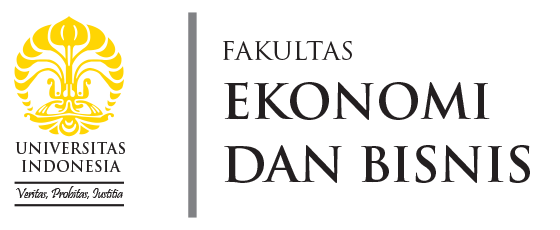World Supply Chain and Inflation
By: Prof. Ari Kuncoro, Ph.D., Chancellor of the University of Indonesia
KOMPAS – (5/10/2021) The perception that the impact of the Delta variant will finally be controlled has become the basis for WTI oil prices to penetrate US$70 per barrel, approaching US$76.5 per barrel. In addition, China is trying to control cost-push inflation by using its strategic oil reserves to control rising oil prices. This effort did not produce results, positive sentiment of world economic recovery continued to push WTI prices to move up. However, there is one interesting prediction from Morgan Stanley (September 2021) which states, if international oil prices reach the range of US$80 per barrel, it will have the potential to damage the world’s economic recovery which will hit oil prices back.
World supply chain
Expectations of world economic recovery are accompanied by rising prices for commodities and intermediate products, ranging from mining products, foodstuffs, agricultural products, wood, base metals, to chips. Soaring energy demand in the European Union and China reversed a temporary trend back to the use of coal as an energy source. Coal prices on the Chinese futures market increased 4 percent in early September. Meanwhile in the Indian market, the price of the best quality coal from the United States rose 30 percent. The impact of this scarcity or price increase on the world production side is shown by the procurement managers’ indexes in the manufacturing sector (PMI) in the two world economic giants. China’s PMI figure fell from 50.1 in August to 49.6 in September, which means it has entered the contraction zone. In the US, the figure is still in the expansion zone, but the movement is flat. The PMI figure fell from 61.1 in August to 60.1 in September.
In several industrialized countries, such as the US, China, UK, Russia, Germany, and Australia, inflationary pressure from the production side does not only come from commodity prices, but also from the labor market. In some of the world’s major ports, long lines of container ships waiting to unload indicate that there is a serious problem. This phenomenon is part of the difficulty of finding labor. First, the issue of restrictions on worker mobility as a consequence of the pandemic. Second, in general, employers must also increase wages and salaries to withdraw workers as a premium for the possibility of being exposed to Covid-19 in their duties.
Global supply chain problems are indicated by consumer price index inflation in the US. Which, although starting to flatten, remains high above its long-term average. US inflation in August 2021 was recorded at 5.3 percent, a slight decrease from 5.4 percent in July and June. This is the price the US has to pay considering its PMI figures are still very expansionary as a result of very strong consumer demand. In China, inflation appears to be cooling faster as the boom in public demand is concentrated in the transportation and energy sectors.
China’s annual inflation was recorded at 0.8 percent in August. Meanwhile, the source of US inflation stems from the surge in demand (demand pull) as well as the increase in production costs due to supply chain constraints (cost push). To reduce demand-side inflation, the US Central Bank could use a contractionary monetary policy, reducing its liquidity injection by US$120 billion per month through the purchase of financial assets (tapering). The risk is a decline in economic activity amid a potential resurgence of the pandemic without being able to relieve cost push inflation so that it could lead the US to stagflation like in the early 1970s.
Domestic impact
World supply chain problems do not seem to have a significant impact on Indonesia’s inflation. This is because the explosion in the pattern of restrained demand in Indonesia is spent more domestically. This can be seen from the consumer confidence index (IKK) in August published by BI. Between July and August 2021 there was an increase in the proportion of income spent on consumption from 74.6 to 75 percent. As a result, the savings-to-income ratio decreased from 15.1 to 14.6 percent.
Pertamina’s data shows that purchasing power is more towards mobility. After briefly declining in July as a result of the implementation of PPKM level 4, consumption for all types of gasoline in August rose by 5.77 percent. Meanwhile, diesel fuel has a positive figure of 4.22 percent. This means that there is an improvement in mobility in the logistics or production sectors after the relaxation of PPKM level 4. This momentum has actually been seen from the pattern of GDP growth until the second quarter of 2021.
From the pattern of recovery forming the letter V in these sectors, public consumption expenditure seems to be directed towards relaxation-oriented mobility. On the positive side, the transportation-warehousing and accommodation-food and drink sectors have the largest unused capacity due to the previous deep contraction so that the impact of inflation is not too significant. Annual inflation for August was 1.59 percent, slightly higher than July’s figure of 1.52 percent.
Another thing that keeps inflation under control is the relatively stable rupiah exchange rate in the range of Rp 14,200-Rp 14,300 per US dollar so that imported inflation is also under control. The trade balance, which has been in surplus for 16 consecutive months, supports this stability. In addition, with its success in suppressing daily new cases, Indonesia is listed by Johns Hopkins University CSSE as one of the countries with the best handling of Covid-19. This is because Indonesia can reduce the daily number of new cases by up to 58 percent within two weeks. As a consequence, portfolio capital is still attracted to Indonesia. By continuing to implement the health protocols, all of these are the initial capital for the continuation of the economic recovery in the coming quarters.
Source: Kompas Daily. Edition: Tuesday, October 5, 2021. General Rubric. Page 1 continued on Page 15.
(am)
